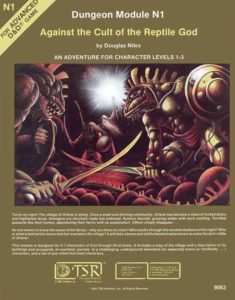Spell competency is the highest level of spell that the magic-user can prepare. This is usually equivalent to experience level divided by 2 (round up). For example, a fifth level magic-user has a spell competency of 3. The original magic-user spell progression followed this pattern up until 6th level spells are considered, which are not gained until 12th level (rather than 11th, as the pattern would require).
I find treating this number as a separate stat is useful. For example, in the spell-casting roll. I imagine it could also be rather useful for some sort of magic duel as well. Relatedly, I read something by Jack on Google Plus about how he has spiced up the fighter class and simplified the thief for his Labyrinth Lord game. One of the abilities he added was a bonus to weapon damage every few levels (not exactly level divided by two in his system, but it easily could be with similar effect).
Does this risk the numerical inflation and illusionism of 4E? Regarding combat, as long as it’s not applied to the accuracy part of the equation, I don’t think so. I probably wouldn’t use this in OD&D, which has a very low numerical baseline (especially if you avoid +1 style magic items, like I do). But I could see it working well in a game that used B/X power assumptions perhaps.
As discussed by Talysman, this kind of “level divided by 2” number also fits well into the reaction roll when opposed by a similarly scoped difficulty number. He uses this as the basis for his X without spells class design paradigm:
The “without spells” approach is based on the reaction roll, and the interpretation of Turn Undead as a reaction roll: subtract the HD of the creature being commanded from the level of the character making the command, double the result, and use it to modify a 2d6 roll. On 9+, the command works.
The math is not exactly the same, but the similarity should be clear, I think. What if we generalized this kind of “reaction roll power” to every class? For example:
- Cleric: turn undead (opposed by undead hit dice)
- Fighter: intimidate or rally (opposed by enemy hit dice)
- Magic-user: casting roll (opposed by spell level)
- Thief: misdirect or dissemble (opposed by interlocutor hit dice)
And, if almost all capabilities are based on level divided by two, why not cut out the middle man and collapse level into that competency number? Attack progression does not happen every level in OD&D or Basic D&D. Saving throws do not increase every level. The only thing that increases every level is hit dice, and I think most of us can agree than D&D characters end up with too many hit dice anyways. An added benefit of this approach would be to do away with some of the ambiguity around the level numbers (as, for example, third level spells would be useable by third level magic-users).



